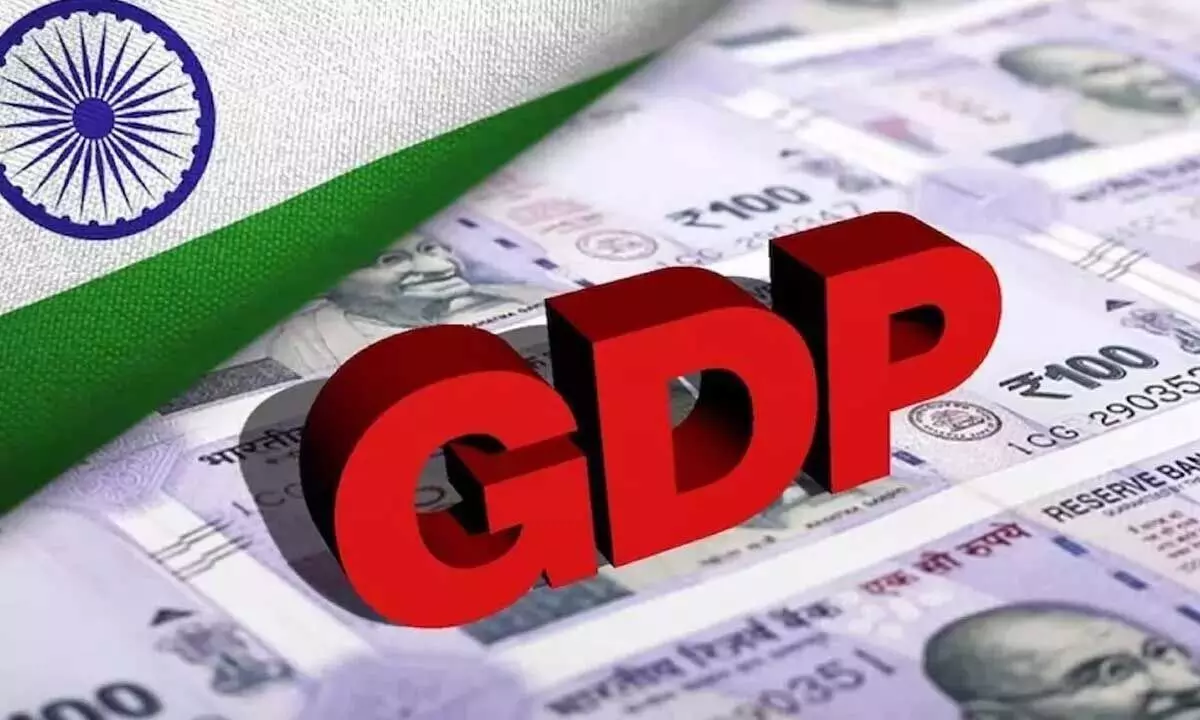India’s GDP growth may be nearer to 8% by fiscal-end
image for illustrative purpose

Defying all estimates, India’s economy grew by 8.4 per cent in Q3 after exhibiting more than eight per cent growth in the preceding two quarters. There is buoyancy in indirect tax mop-up and the gap between GDP and GVA growth has widened. For FY24, the GDP growth is expected to increase by 7.6 per cent and GVA growth by 6.9 per cent. Experts now estimate Q4 GDP growth at 5.9 per cent. Thus it is most likely that FY24 GDP growth could be, as per Ecowrap, within striking distance of eight per cent. Sharp revisions in both previous yearly as also quarterly numbers have meant FY22 and FY24 numbers have been revised upwards by 64 bps and 26 bps, respectively while for the current fiscal, both Q1 & Q2 numbers have been revised upwards by 40 bps and 44 bps, respectively, uplifting YTD GDP growth above 8 per cent mark. With the government's efforts to ensure quality of life for all citizens and stopping leakage of benefits through DBT, the per capita GDP at current prices crossed the Rs. two lakh mark, with decadal CAGR growth of 8.9 per cent.
In constant prices too, per capita GDP has increased to Rs 1.24 lakh in FY24. It is interesting to note that in post-pandemic period in FY24 over FY22, one can notice a huge jump in per capita GDP Rs. 38,257 at current prices. The investment and savings data for the past decade reveals interesting points. Gross capital formation by the government touched a high of 4.1 per cent in FY23, up from 3.6 per cent in FY20. This had a domino effect on private sector investment that jumped from 11 per cent to 11.9 per cent over the same period. In fact, the trends in GCF to Gross Output ratio or the plough back of funds for creation of fresh capacity shows that for public administration the ratio attained fresh peak in FY23 at 47.6 per cent owing to the emphasis on capital expenditure in recent budgets, while household financial savings have since then moderated from 15.4 per cent in FY23 to 11 per cent in FY21.
Even if investment and savings stay at the same level in FY25, with a declining ICOR, India could comfortably grow at eight per cent in FY25. Another stellar quarter of healthy growth prints has been underpinned by strong manufacturing and steady services. Expenditure-side estimates depict healthy GFCF and tepid private consumption growth, while government consumption slowed considerably. The wide divergence between higher investment vs. lower consumption and moderate exports has been the key highlight of the past year. The key surprising factor has been the 190 bps sharp wedge between GDP and GVA growth, which is difficult to fathom. However, on the surface, it largely reflects higher growth in general government net indirect taxes, possibly with lower subsidies.

